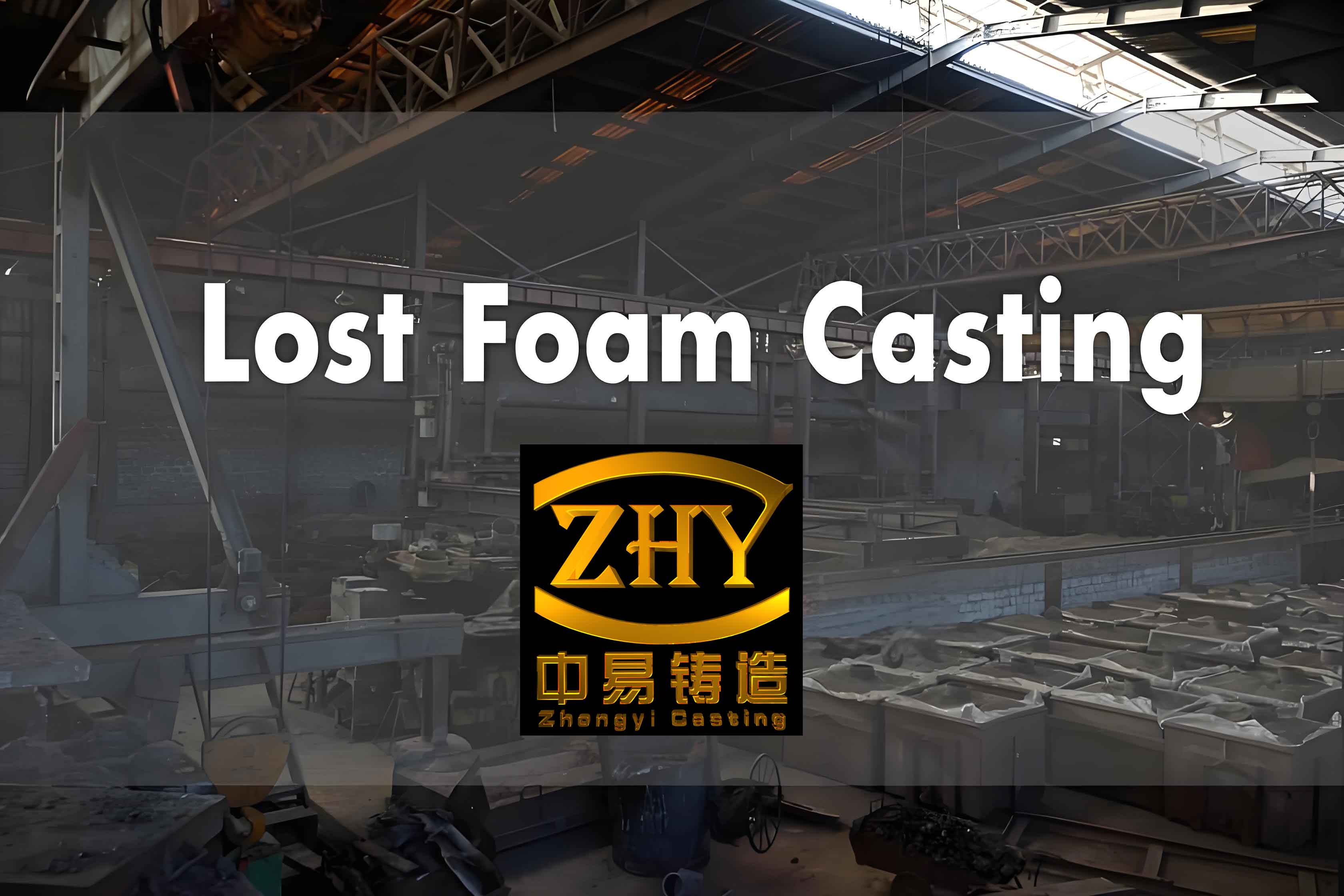Introduction
Lost foam casting (LFC) is widely recognized for its ability to produce high-precision components with excellent dimensional consistency and internal integrity. However, challenges such as casting defects—including box lifting and iron inclusions—persist due to the dynamic interactions between foam decomposition, metal flow, and solidification. This article analyzes the root causes of these defects in the production of 140 flywheel housings and proposes targeted solutions through process adjustments and systemic optimizations.

Key Challenges in Lost Foam Casting
The 140 flywheel housing, with a mass of 32 kg and dimensions of 450 mm × 450 mm × 230 mm, features thin walls (11 mm) and complex geometries, including cross-shaped side holes (depth: 41 mm). The primary casting defects observed during production were:
- Box Lifting: Upward deformation of the casting due to insufficient vacuum control or premature pressure release.
- Iron Inclusions (Iron Clamping): Penetration of molten metal into the sand matrix, forming sand-metal composites.
These defects resulted in a scrap rate of ~40%, necessitating urgent process refinements.
Root Cause Analysis of Box Lifting
Box lifting manifested as elliptical distortion of the circular flange (Figure 2 in original text), rendering the component unusable post-machining. Through systematic trials, the following factors were identified:
1. Vacuum Pressure and Duration
The initial vacuum setting of -0.025 MPa proved inadequate to stabilize the sand mold during metal pouring. Premature termination of vacuum pressure (<60 s) exacerbated foam decomposition forces, leading to upward displacement.
Equation 1: Foam Decomposition ForceFdecomp=k⋅Pvac⋅Asurface
where k is the foam reactivity coefficient, Pvac is the vacuum pressure, and Asurface is the foam surface area.
Increasing vacuum pressure to -0.035 MPa and extending the pressure holding time from 60 s to 90 s eliminated box lifting. Subsequent optimization reduced this to 75 s without compromising stability.
2. Sand Compaction and Ventilation
Clogged filters at the sandbox base reduced vacuum efficiency. Regular maintenance and increased sand grain size (AFS 55 to AFS 45) improved permeability.
Table 1: Impact of Process Adjustments on Box Lifting
| Parameter | Initial Value | Optimized Value | Defect Reduction (%) |
|---|---|---|---|
| Vacuum Pressure (MPa) | -0.025 | -0.035 | 45 |
| Pressure Holding Time (s) | 60 | 75 | 30 |
| Sand Grain Size (AFS) | 55 | 45 | 25 |
Iron Inclusions: Mechanisms and Mitigation
Iron clamping occurred due to localized overheating, inadequate coating thickness, or poor sand compaction.
1. Coating Integrity and Thermal Resistance
The original coating thickness of 0.8 mm failed to withstand metal temperatures exceeding 1450°C. Increasing thickness to 1.2 mm and using zirconia-based coatings (refractory index >1600°C) reduced penetration.
Equation 2: Coating Thermal Stabilityτfailure=α⋅(Tmelt−Tcoating)δcoating2⋅ρ⋅Cp
where δcoating = coating thickness, ρ = density, Cp = heat capacity, and α = thermal diffusivity.
2. Sand Compaction and Gating Design
Reduced spacing between adjacent patterns (from 110 mm to 20 mm) hindered sand flow into cavities, creating voids. Implementing a dual-vibration regime (frequency: 60 Hz for 15 s + 45 Hz for 10 s) enhanced compaction density.
Table 2: Vibration Parameters and Defect Correlation
| Vibration Frequency (Hz) | Duration (s) | Compaction Density (g/cm³) | Iron Inclusion Rate (%) |
|---|---|---|---|
| 50 | 20 | 1.52 | 18 |
| 60 + 45 | 25 | 1.68 | 6 |
Integrated Process Optimization
Combining vacuum control, coating upgrades, and vibration refinements reduced overall scrap rates to <5%. Key steps included:
- Vacuum System Calibration: Real-time monitoring of pressure gradients.
- Coating Application: Automated dipping with thickness sensors.
- Sand Management: Periodic filter replacement and grain size optimization.
Equation 3: Defect Probability ModelPdefect=β0+β1⋅Pvac+β2⋅τhold+β3⋅δcoating
where βi are regression coefficients derived from process data.
Conclusion
In lost foam casting, mitigating casting defects requires a holistic approach that balances thermal, mechanical, and material factors. For the 140 flywheel housing, optimizing vacuum pressure, extending pressure holding times, and enhancing sand compaction resolved box lifting and iron inclusions. These improvements underscore the importance of adaptive process control in high-volume lost foam casting applications.
